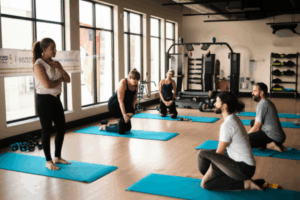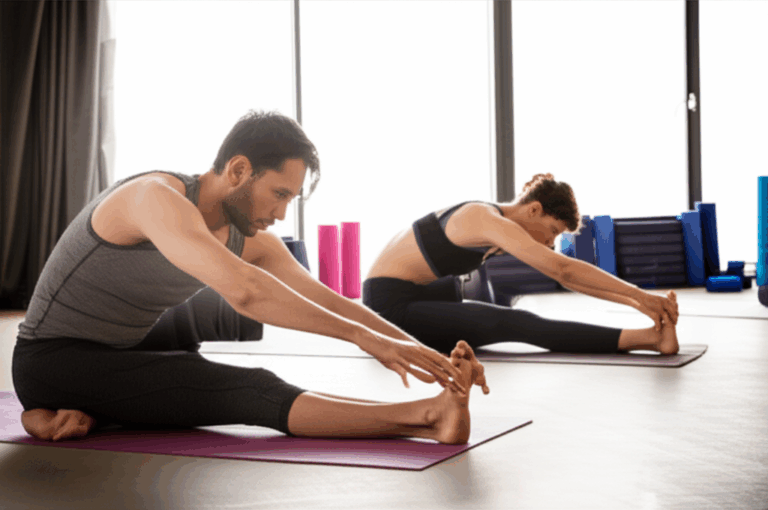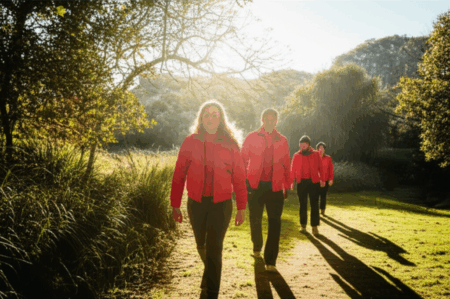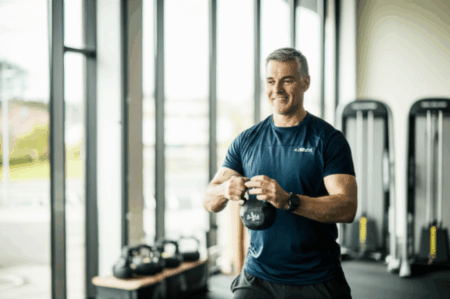In a world that often champions rigid discipline and unyielding schedules, the concept of a “flexible” fitness routine might seem counterintuitive. Yet, the ability to adapt your workouts, both in terms of physical range of motion and scheduling, is not merely a convenience—it’s a cornerstone of sustainable health, injury prevention, and enhanced performance. On this Move It Monday, let’s explore why bending, not breaking, is the key to a truly resilient fitness journey.

The Unsung Hero of Fitness: Physical Flexibility
At its core, physical flexibility refers to the capacity of your muscles and the connective tissues surrounding them to temporarily stretch, allowing a joint to move freely through its entire range of motion. It’s one of the five basic components of an exercise routine, alongside cardio, muscle strength, muscle endurance, and body composition.
There are generally two types of flexibility:
- Static Flexibility: This involves holding a stretch for a period, improving joint mobility and muscle elasticity to increase overall flexibility.
- Dynamic Flexibility: This type of stretching moves muscles through their full range of motion, often mimicking movements you’ll perform in your workout or sport. Dynamic stretches are particularly beneficial as a warm-up before physical activity.
While some aspects of flexibility are hereditary, factors like muscle elasticity, length, and nervous system health can be controlled and improved through training.

Why Embrace Flexibility in Your Workouts?
Integrating flexibility into your fitness routine offers a multitude of benefits that extend far beyond simply touching your toes.
Injury Prevention and Pain Reduction
One of the most crucial advantages of flexibility is its role in preventing injuries. By allowing joints to move smoothly and correctly during functional movements, flexible muscles reduce excessive stress on joints, significantly lowering the risk of strains and sprains. Lengthening tight muscles also helps alleviate aches and pains, making everyday movements more comfortable and reducing muscle cramps.
Enhanced Performance and Mobility
Improved flexibility directly translates to better athletic ability and performance. When your muscles are supple, they can contract more effectively and move with greater freedom, enhancing your range of motion for activities like running, jumping, and lifting. This improved mobility makes exercise easier and boosts overall functionality, whether you’re tackling a HIIT session or simply reaching for a top-shelf item.
Better Posture and Balance
Poor flexibility can strain muscles and joints, often leading to poor posture. Regular flexibility exercises, such as yoga and Tai Chi, can significantly improve your posture and balance, making it easier to sit, stand, and move efficiently. Research has even shown that flexibility training leads to improved balance and coordination.
Mental Well-being and Stress Reduction
Movement workouts focusing on flexibility are typically slow and gentle, promoting a greater sense of relaxation and well-being. Stretching can help alleviate built-up tension in the body, acting as an effective destressor.
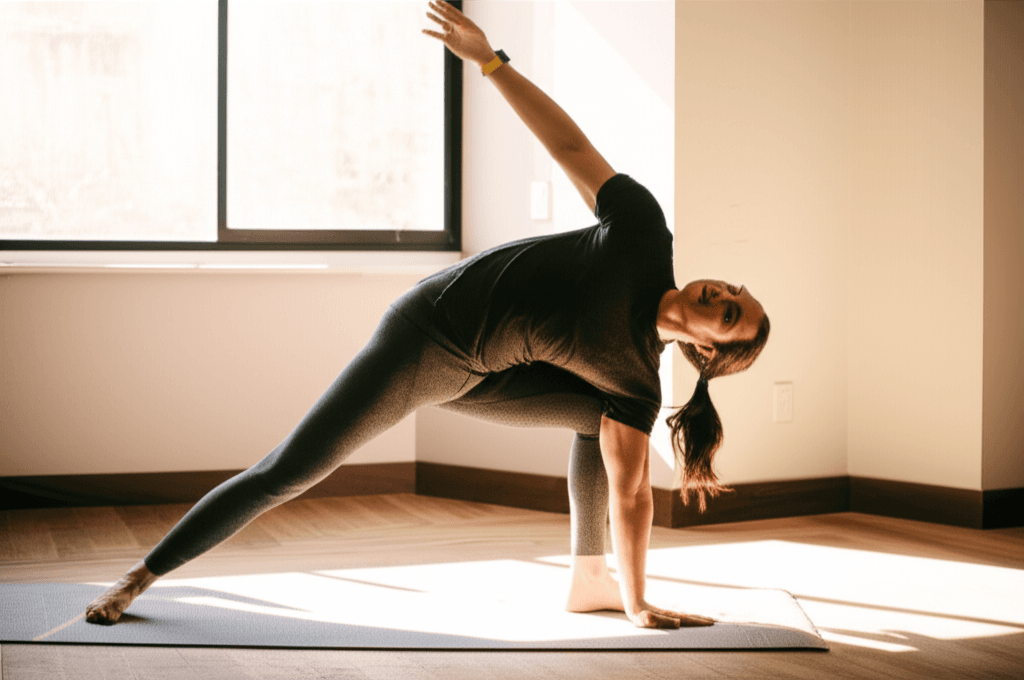
Building a Truly ‘Flexible’ Fitness Schedule
Beyond physical elasticity, a flexible fitness routine also implies adaptability in your schedule and approach. This is where “adaptive fitness” comes into play.
The Concept of Adaptable Fitness
Adaptive fitness refers to personalized exercise programs tailored to individual needs, capabilities, and limitations. It’s about designing workouts that you can adjust based on your daily energy levels, time constraints, or even unexpected changes. This approach ensures inclusivity, allowing individuals of all fitness levels—including those with physical challenges or recovering from injuries—to engage safely and effectively. The body’s ability to adapt to stressors, a concept known as physical adaptation, is fundamental here; by consistently challenging your body in varied ways, you foster greater resilience and overall fitness.
Designing Your Adaptive Workout Plan
Creating a truly flexible plan involves forethought and a willingness to adjust:
- Be Realistic About Your Time: Objectively assess how many days you can realistically dedicate to fitness, considering other priorities. Aim for at least 3-4 workouts per week to see progress, but even two days of resistance training can foster muscle growth.
- Vary Your Training: Incorporate a mix of resistance training, aerobic training, balance exercises, and, of course, flexibility. Explore different types of cardio, like swimming or cycling, for variety and to suit different conditions.
- Schedule Active Recovery: Don’t underestimate rest days. Make them “active recovery” days with low-intensity activities like foam rolling, stretching, yoga, or Tai Chi to aid muscle recovery and mobility.
- Build in Contingency Plans: Life happens. Instead of canceling a workout entirely, have a backup plan. If your morning workout is disrupted, plan to complete a modified version later in the day.
- Allow for “Unscheduled” Time: Resist the urge to pack every minute. Leaving some open time in your schedule creates space for spontaneity and unexpected opportunities to move.
Integrating Flexibility Training into Your Routine
Making flexibility a consistent part of your week is simpler than you might think:
- Warm-Up First: Always warm up for a few minutes with light cardio (like walking in place) before static stretching to prepare your muscles.
- Dynamic Stretches Before Activity: Incorporate dynamic stretches that mimic your workout movements before you exercise to prepare your body.
- Static Stretches Post-Workout: After your main workout, when muscles are warm, is the ideal time for static stretching to improve overall flexibility.
- Aim for Consistency: Dedicate 3-5 days per week to flexibility training. Even five minutes of stretching at the end of a session is beneficial.
- Proper Technique: Hold each stretch for 10-30 seconds, stretching slowly until you feel tightness, but never pushing into pain. Remember to breathe normally.
- Explore Options: Consider joining a yoga or Pilates class, trying Tai Chi, or even water aerobics, all of which are excellent for improving flexibility and balance. Foam rolling is another effective tool for long-term flexibility and recovery.

Overcoming Challenges to a Flexible Routine
The biggest hurdle for many is often a lack of time or motivation. However, viewing fitness with a flexible lens means you can adapt. If you can’t commit to a full hour, break it into shorter sessions. Even brief, consistent stretching can make a significant difference over time. Be patient with yourself; becoming more flexible takes time.
Embracing a flexible fitness routine—both physically and logistically—is about giving yourself the grace to adapt without losing sight of your health goals. It’s about building a sustainable practice that makes movement easier, reduces pain, and enhances your overall well-being for the long haul. So, this Move It Monday, start stretching not just your muscles, but your approach to fitness, and unlock a more adaptable, resilient you.


